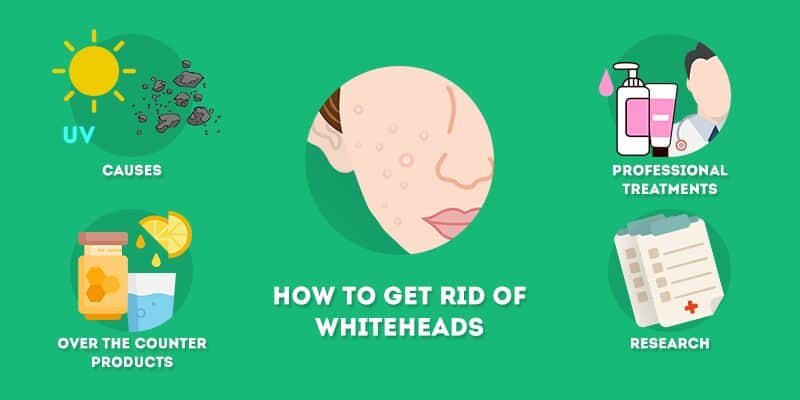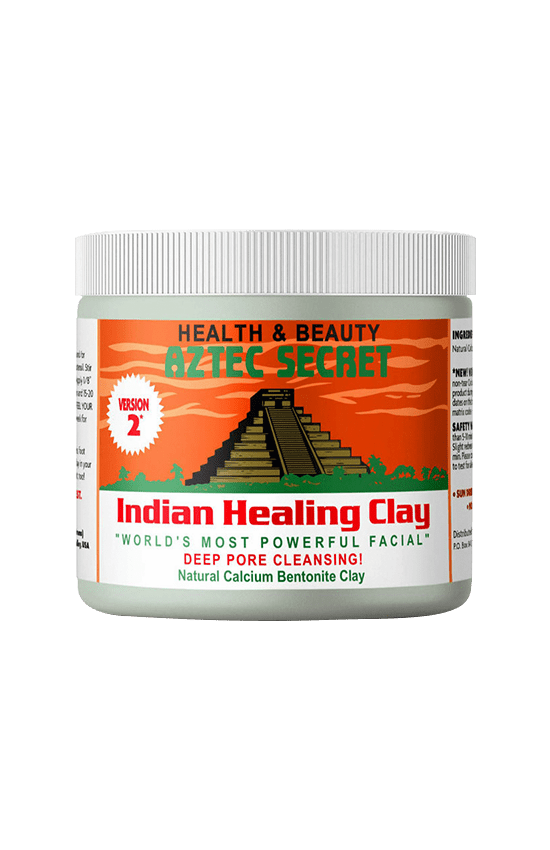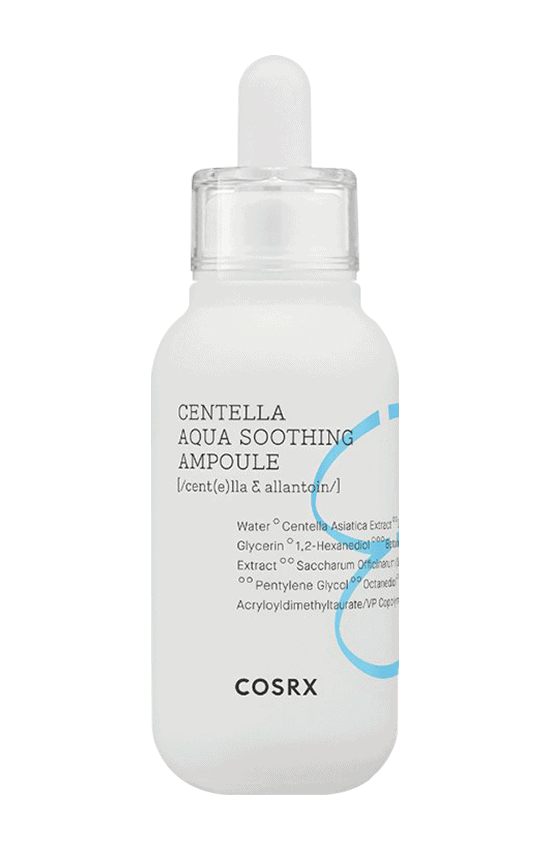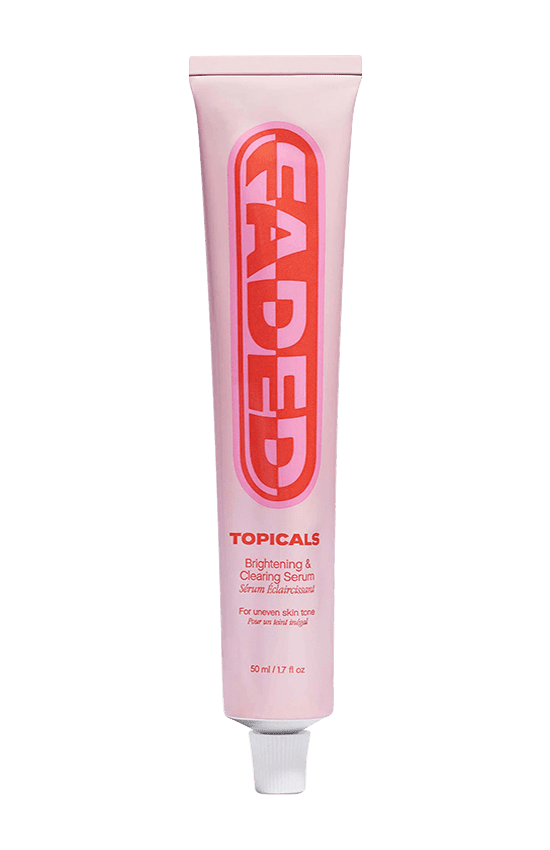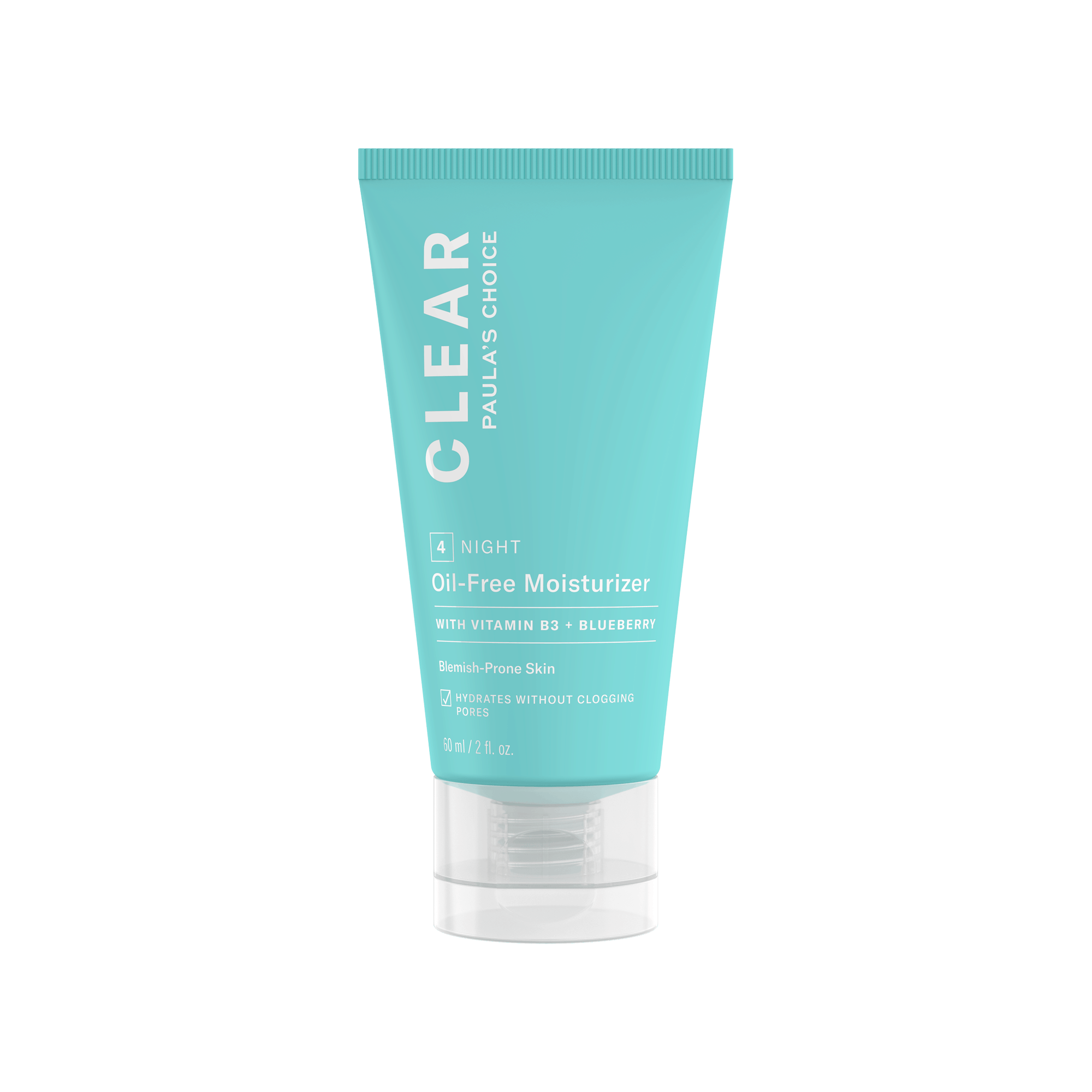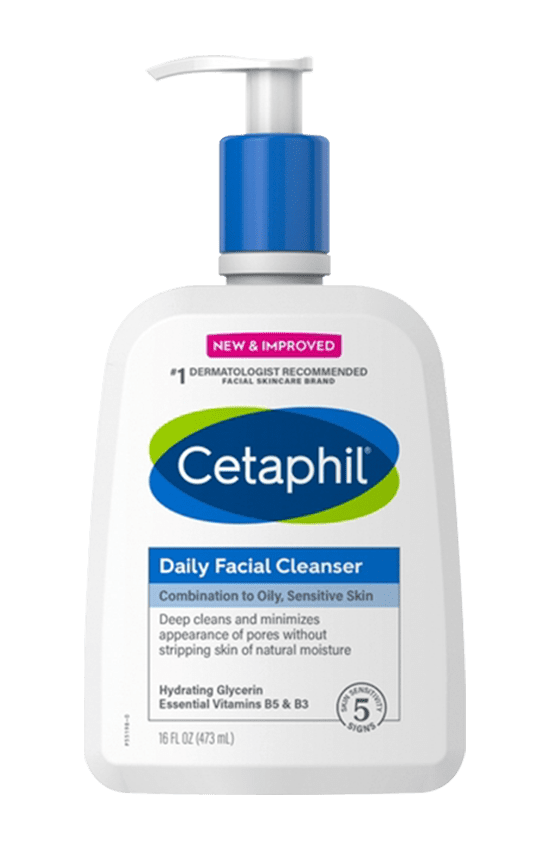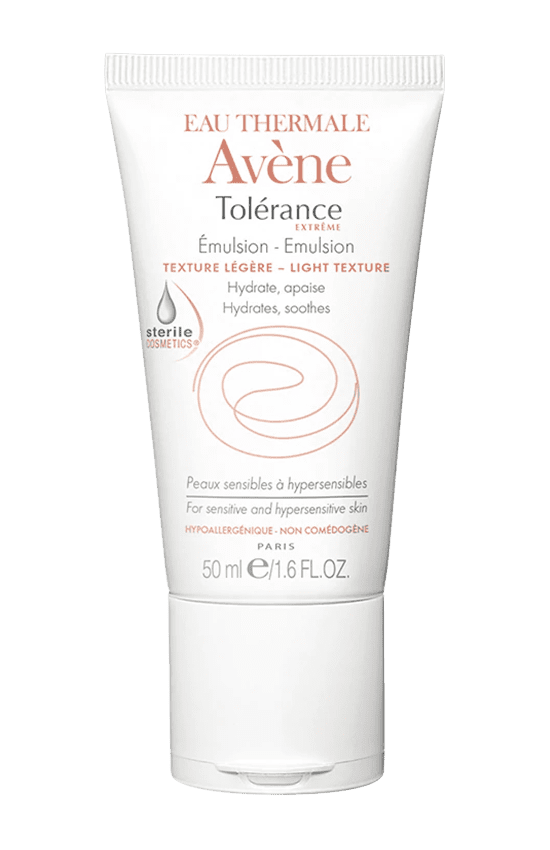Nobody is immune to whitehead breakouts. These annoying raised white bumps can occur on their own or in clusters. To understand how to treat this form of acne, it is important to recognize all of the causes. Read on for more information about whiteheads and how to stop these breakouts in their tracks:
What Are Whiteheads?
As one of the most common types of acne, whiteheads occur when hair follicles become clogged with excess sebum, bacteria, and dead skin cells. It is normal for the skin to release oil. However, when this oil mixes with old skin cells and bacteria on the epidermis inside of the hair follicles, the pore becomes clogged and a whitehead lesion erupts. When the enlarged follicle becomes trapped under the surface of the epidermis, the whitehead begins to appear. Also known as closed comedones, these raised bumps often become inflamed, complicating the problem.
What Causes Whiteheads?
A variety of factors cause whiteheads. The most common underlying reason for whitehead eruptions lies with fluctuating hormones.
- Puberty, menstruation, pregnancy, or the use of oral contraceptives are a few of most likely hormonal changes.
- Overproduction of oil on the surface of the skin can lead to more frequent breakouts.
- There is also an abundance of external and environmental factors that lead to whitehead eruptions.
- Examples of these issues include certain medications, clothing that is too tight, excess body sweat, environmental pollutants, excessive scrubbing of the skin, and trying to pop pimples on your own.
Whiteheads vs. Milia
It can be easy to confuse whiteheads with milia, but they are actually quite different. Milia happens when keratin becomes trapped in a follicle just below the skin's surface. As a result of this entrapment, small, non-inflamed cysts begin to form on the surface of the skin. Although milia may exhibit some of the physical characteristics of whiteheads, it is not acne. One way to tell the difference between whiteheads and milia is its location on the face.
Milia primarily occurs around the eyes, eyelids, and upper cheeks. It is not likely to appear on the forehead and chin area, unlike its whitehead counterpart. Unlike whiteheads that are receptive to popping, milia will not respond to squeezing or hot compresses. Milia also usually last longer than the average whitehead life cycle, hanging on for weeks or even months. While whiteheads are sprung from the pore, milia are located right under the top layer of skin and not in the follicles.
How to Get Rid of Whiteheads
1. Regularly Cleanse Your Skin
A cleansing routine should not be overly complicated, yet it is vital to the health of your skin. A dime-sized portion of cleanser should be sufficient for each use. Use lukewarm water so that the temperature does not cause further irritation. Gently massage the cleanser into the face, rubbing your fingers in a circular motion covering all of the skin. Once the cleanser has sufficiently penetrated the skin, rinse the product off using lukewarm water. Use a clean and dry towel to gently pat the skin dry. Do not be too aggressive when drying the skin or your face will be subject to more irritation.
2. Exfoliation
A regular exfoliation process will help to speed the rate in which cells turn over and reproduce. Committing to exfoliating daily can help to smooth out skin and rid the face of whiteheads. The most effective exfoliators for whiteheads are leave-on products that contain the active ingredient beta hydroxy acid (BHA). The most common BHA is salicylic acid. This ingredient will work hard to penetrate deep into the clogged pores and slough away dead skin cells. Because salicylic acid is an anti-inflammatory, it is a good choice when looking for skin penetration.
3. Treatment Options
There is a myriad of treatment options available for those people wanting to attack the whiteheads. Two of the most common products prescribed are benzoyl peroxide and azelaic acid.
Benzoyl Peroxide
Benzoyl peroxide is especially versatile because it is available in varying strengths and forms. This gold standard in treatment is available for purchase as an over the counter product with up to 2.5 percent in strength. Those desiring a more potent formula can use it in prescription form. Benzoyl peroxide works by introducing oxygen to the pores. Because acne-causing bacteria cannot live in oxygen-rich environments, the benzoyl peroxide effectively reduces the number of bacteria on the skin. This reduces the chance of whitehead flareups. Benzoyl peroxide also strips away old skin cells, providing a dose of preventative treatment.
Azelaic Acid
Azelaic acid has also demonstrated great promise in fighting the battle with whiteheads. This product comes in cream, gel, or lotion form. Although it is primarily available in prescription form, the ingredient can be found in a few multi-functional over the counter treatments. The naturally-occurring acid increases the rate in which cells turn over. The best results occur when the acid combines with other acne treatments such as glycolic acid or topical retinoids. For this reason, azelaic acid is usually prescribed as a supplemental treatment used in conjunction with additional products.
4. Moisturize
One of the most neglected steps of any skincare routine is the moisturizing process. It is vital that you replace lost hydration if you are looking to clear up acne. Many of the most recommended acne treatments on the market strip away the skin's natural protective moisture barrier. Salicylic acid and benzoyl peroxide are two of the biggest offenders. An effective moisturizing routine can deliver this much-needed hydration back to the skin so that it does not dry out.
Best Whitehead Removal Products
1. Paula's Choice SKIN PERFECTING 2% BHA Liquid Exfoliant
The cult-like following of this product is for good reason. This liquid exfoliant boasts an exceptional ability to travel deep into the pore to unclog excess skin cells and oil. As a result, skin is left fresh and unblemished. The active ingredient BHA is an effective agent to slough away dead skin cells and even out skin tone. Because it is a product that remains on the skin after application, it continues to do its magic long after it has been applied.
2. Paula's Choice SKIN PERFECTING 8% AHA Gel Exfoliant with Glycolic Acid
AHAs are an important ally to have on your side in the battle against whiteheads. Boasting a formulation of eight percent glycolic acid, this exfoliant strips away dead skin cells and unclogs pores. The unique leave-on formula soothes skin as it fights whiteheads. The premium product also contains antioxidants from green tea partnered with the soothing properties of chamomile. This chemical exfoliant is gentler on the face than many of the most common facial scrubs, making it a good choice for when you want to keep irritation at bay.
3. Acne.org 8 oz. Treatment
Containing a formulation of 2.5 percent benzoyl peroxide, this spot treatment goes on clear and dries quickly, allowing you to get on with your day. The perfect balance of benzoyl peroxide kills excess dirt and oil to unclog pores. Research has shown that products containing a 2.5 percent concentration of benzoyl peroxide are usually just as effective as those prescription treatments boasting ten percent of the solution. The lower dose of benzoyl peroxide also reduces the chance that the skin will suffer from dryness and irritation.
4. Paula's Choice 10% Azelaic Acid Booster
his serum booster delivers a multitude of benefits to the skin. With a concentration containing ten percent azelaic acid, the product speeds up the natural turnover of cells. The salicylic acid works to gently exfoliate the skin, giving this product a two-pronged approach to eliminating whiteheads. Use this booster as a stand-alone product or added to your favorite moisturizer for maximum results. The lightweight formula and oil-free texture will not leave your skin feeling greasy.
Professional Options to Getting Rid of Whiteheads
1. Whitehead Extractions
An extraction is generally performed by a dermatologist, aesthetician or a facialist on open comedones. The process should never be tried on an inflamed pimple because it could result in permanent scarring. If you choose to try this process at home, you can buy a specially designed comedone extractor. Most extractors are metal tools with a small loop at one end. The instrument needs to be thoroughly sanitized before using it. Then place the loop around the whitehead and apply pressure gently and with caution. It is always a good idea to go to a professional for an initial extraction so that you can see how it is performed.
2. Chemical Peels
One of the most popular spa treatments is the versatile chemical peel. This process has such widespread appeal because of its effectiveness and the ability that you have to customize the peel to your personal skin care needs and sensitivities. The process yields fresh and unblemished skin after the dead skin cells are sloughed away. The skin is rapidly exfoliated using either a beta or alpha hydroxy acid. Acne lessens because the exfoliation process keeps excess oil and dirt from congregating into pores and encouraging breakouts. Chemical peels are usually performed in a series. The price varies and is dependent on the number of peels in your package, how superficial the peel is, and the size of the area being treated. While some people will feel a slight burning during the peel, it not generally a painful process. The most common side effects of this treatment are flaking, redness, or drying of the skin.
3. Topical Retinoids
These topical treatments are derivatives of vitamin A, making them a powerful ally in the fight against whiteheads. The clinical names of tretinoin, adapalene, and tazarotene distinguish this class of treatment. With the exception of lower doses of adapalene, topical retinoids are only available through prescription. Retinoids work by increasing the rate in which cells turn over. This unclogs pores and decreases inflammation, leading to clearer skin.
4. Birth Control (females only)
In recent years, there has a been a large uptick in the number of women using birth control to help corral acne. The three types of birth control approved for use as an acne treatment are Yaz, Ortho Tri-cyclen, and Estrostep. These oral contraceptives work to control the production of excess sebum to alleviate the chances that whiteheads erupt. All three of these birth control pills contain both estrogen and progesterone. It is important to not use progesterone-only oral contraceptives as a measure to combat acne. This type of birth control will only make the problem worse. Because using oral contraceptives only targets a small part of the overall acne picture, it is a good idea to continue with other forms of preventative treatment measures.
5. Antibiotics
Antibiotics such as doxycycline and minocycline are also used to treat whiteheads. Although this is not a good long-term treatment because of the risk of developing a resistance to the antibiotics, the use of these drugs is a good way to stop acne in its tracks. These drugs are usually prescribed in conjunction with topical medications.
Natural Options for Fighting Whiteheads
1. Neem Oil
This natural vegetable oil comes from the fruits and seeds of the neem evergreen tree. Some studies have shown that this oil produces the necessary antibacterial action needed to kill acne. Neem oil can also help to calm inflammation and reduce redness that is a result of acne. The fatty acids present in this oil can also reduce the appearances of acne scars.
2. Tea Tree Oil
This oil is a common ingredient in many acne products such as cleansers, astringents, and pads. The antimicrobial properties of tree tea oil go to battle with bacteria on the skin in an effort to reduce whitehead breakouts. Do not use tree tea oil in its full-strength form applied directly to the skin. Instead, it needs to be diluted or mixed with other products so that the skin does not become irritated
Other Tips (To Help Prevent Whiteheads)
1. Do Not Touch Your Skin
We know that this rule can be a challenge to follow. However, it is important to always remember that touching your skin only serves to introduce new bacteria to the surface of the skin. Your fingertips also harbor a variety of harmful irritants and environmental impurities that will transfer to your skin if you continue to touch it. One of the best ways to prevent annoying whitehead breakouts is to keep your hands off of your skin.
2. Keep Your Cell Phone Screen Clean
One of the biggest harboring agents of bacteria and germs is a cell phone screen and case. Keeping this in mind, now imagine what transfers to your face every time you hold the phone up to your ear to take a call. To keep this grimy dirt and bacteria away from your skin, it is important to regularly wipe your phone down with an antibacterial wipe.
3. Change Your Pillowcase Regularly
Like your cell phone screen, your pillowcase should also be kept as clean as possible. Even with the best cleansing routines, dirt and oil can transfer to your pillowcase at night. This will then rub back onto your face in the subsequent nights. Regular washings of the pillowcase and other bedding will break this cycle.
4. Use Clean Towels
Clean towels should also be a necessity. You have probably noticed the makeup that transfers to a towel after you dry your face following your cleansing routine. You will put that harmful dirt and bacteria back on your skin if you use the same towel again. This is why it is a good idea to get into the habit of using clean towels.
5. Use a Water Soluble Cleanser
This class of cleansers is ideal for removing makeup and sunscreen. Water-soluble cleansers come in forms such as foaming lathers or hydrating creams.
6. Take Care When Eating Oily Food
Although the food itself will not cause breakouts due to ingestion only, the oil can cause issues if it gets on your skin. For this reason, it is important to be careful when eating greasy food and to make sure your face and hands are properly wiped.
7. Use Non-comedogenic Skin Care Products
Engineered to help reduce blockage of visible pores, these products are the most effective when wanting to eliminate whiteheads. Most non-comedogenic products are free of oil. The products should break down excess oil on your skin without removing the much-needed moisture and nutrients that it needs to remain healthy.
8. Do Not Aggressively Scrub the Skin
Too much of a good thing is a bad thing. Although you want to keep practicing good hygiene to keep whiteheads from forming, aggressively scrubbing the skin will compound the problem. Rubbing too hard can cause micro-tears in the skin and lead to even more irritation.
9. Keep Hair Products Off of Skin
You would not believe how much acne-causing ingredients are lurking in your hair products. Because of this, it is important to ensure that your hair products do not get on your skin. Waxes and gels are especially likely to cause breakouts if they seep into the skin.
10. Keep Long Hair Pulled Back
Likewise, it is a good idea to keep long hair pulled back so that the offending products do not transfer to the skin. Because the forehead region is especially susceptible to whitehead breakouts, long bangs are a frequent problem when not kept off of the skin.
11. Avoid Using Overly Fragranced Products
Too much fragrance or alcohol in a product can cause havoc on your skin. Instead, choose fragrance-free treatments to avoid irritating the skin and causing whitehead eruptions.
12. Be Consistent and Diligent
As with any health care or beauty routine, consistency is key. Being diligent about your skincare routine will yield the best results and keep breakouts to a minimum.
Whitehead Myths
There is a lot of misinformation that is out there about whiteheads. In order to effectively treat this form of acne, you need to learn how to separate the fact from fiction. Here are a few myths to keep in mind:
1. Only Teens Suffer Acne
Although acne has largely been regarded as a teen problem, the truth is that acne can follow you well into your adult years and even reappear again long after you thought it was gone. Adult acne is more common in women because of the hormonal fluctuations that females experience regardless of age.
2. It is Fine to Pop Those Pimples
We know it is tempting to try to pop those pimples on your own. But it is important to resist the urge to squeeze your blemishes away. By attempting to remove them on your own, you are actually doing more harm than good. Not only do your fingers harbor dirt and impurities that you introduce to your face when you touch it, but squeezing the pimples can actually push the offending bacteria further back into the pore. Popping your pimples also increases the chances that scars will take root. It is a better idea to keep your hands off of your acne and wait for nature to take its course.
3. The Sun is Good for Acne
Many people erroneously believe that the drying effects of the sun help to dry out acne breakouts and clear the skin. This is simply not true. While a mild tan or sunburn may reduce the appearance of acne, the effects are only temporary. What you are instead left with is skin that is more susceptible to further irritation. Many of the most common acne-fighting products also increase the skin's sensitivity to the sun, further aggravating the problem.
4. There is a Cure
We all want to be believe that acne can be cured with the right treatment protocol. However, although there has been rapid advancement in treatment options for acne, there is no cure-all solution that meets every personal need. Acne is a fluid situation that can reappear at any stage in life. If you are prone to breakouts, it is important to manage the condition with proper preventative treatment. A daily cleansing, exfoliating, and moisturizing routine can help to keep breakouts at bay.
5. Pores Can Open and Shut
Although it seems counter intuitive, pores do not have the biological mechanism to open and close. Pores do not have muscles that allow for contractions. Contrary to popular belief, steam does not open pores. It may loosen the excess oil that congregates inside of the pore, but the follicle itself does not open. Using a cleanser or exfoliator with glycolic or salicylic acid can help to shake out the dead skin cells that build up inside of the pore. Ridding the pore of this blockage makes the pore appear smaller and mitigates the occurrence of breakouts.
6. Acne is the Result of Dirty Skin
Uncleanliness does not cause acne. Acne results when too much bacteria accumulate on the surface of the skin. This bacteria can then become trapped inside the pores and exacerbate the problem. Many acne sufferers overdo the fash washing thinking that it will clear up the blemishes. However, too much cleansing can irritate the skin and result in more inflammation and possibly even infection.
7. All Exfoliants are Equal
It can be overwhelming to select the right skin care products for your personal needs. However, it is important to not take the decision lightly. Not all exfoliators are the same. You need to choose an exfoliator that is formulated for your specific skin type so that the right ingredients are delivered to your skin.
8. Greasy Foods Cause Acne
You can rejoice in knowing that french fries and other greasy foods will not make the acne problem worse. Although indulging in fattening and greasy foods might not be the best choice for your overall health, the oil in these foods will not migrate from your insides to your pores. Likewise, drinking copious amounts of water may be beneficial to your health but it will not clear up your acne.
FAQ
How long does it take for whiteheads to go away?
There are no overnight miracles when it comes to getting rid of whiteheads. Most treatments take at least four to six weeks for the results to become apparent. If you do not notice visible improvements in that time frame, it may be time to add a second layer of treatment to your daily regimen.
Can you get rid of whiteheads naturally?
Preliminary studies are showing promise that tree tea oil and neem oil are effective agents for naturally fighting off whiteheads. Although there is still more research needed to show its definitive effects, clinical studies are indicating that the natural oils may be an effective deterrent for whiteheads.
Do home remedies work for whiteheads?
Yes. The salicylic acid or AHA treatments described above are suitable for home use. These treatments have been proven to work when used consistently.
Do lemons and baking soda help whiteheads?
The research supporting the use of lemons and baking soda to treat whiteheads is purely anecdotal. Both ingredients can cause more harm than good. The acidic nature of lemons will likely cause the skin to dry out. You may also experience burning and stinging if you use it on your face. People with dark skin tone may also notice hyperpigmentation if using lemon as a way to fight acne.
Baking soda can actually lead to more breakouts because it disrupts the skin's natural pH level. The strong alkaline properties of baking soda strip the skin of its natural oils and make it more susceptible to bacterial invasions. Baking soda can also make the skin more sensitive to the sun.
